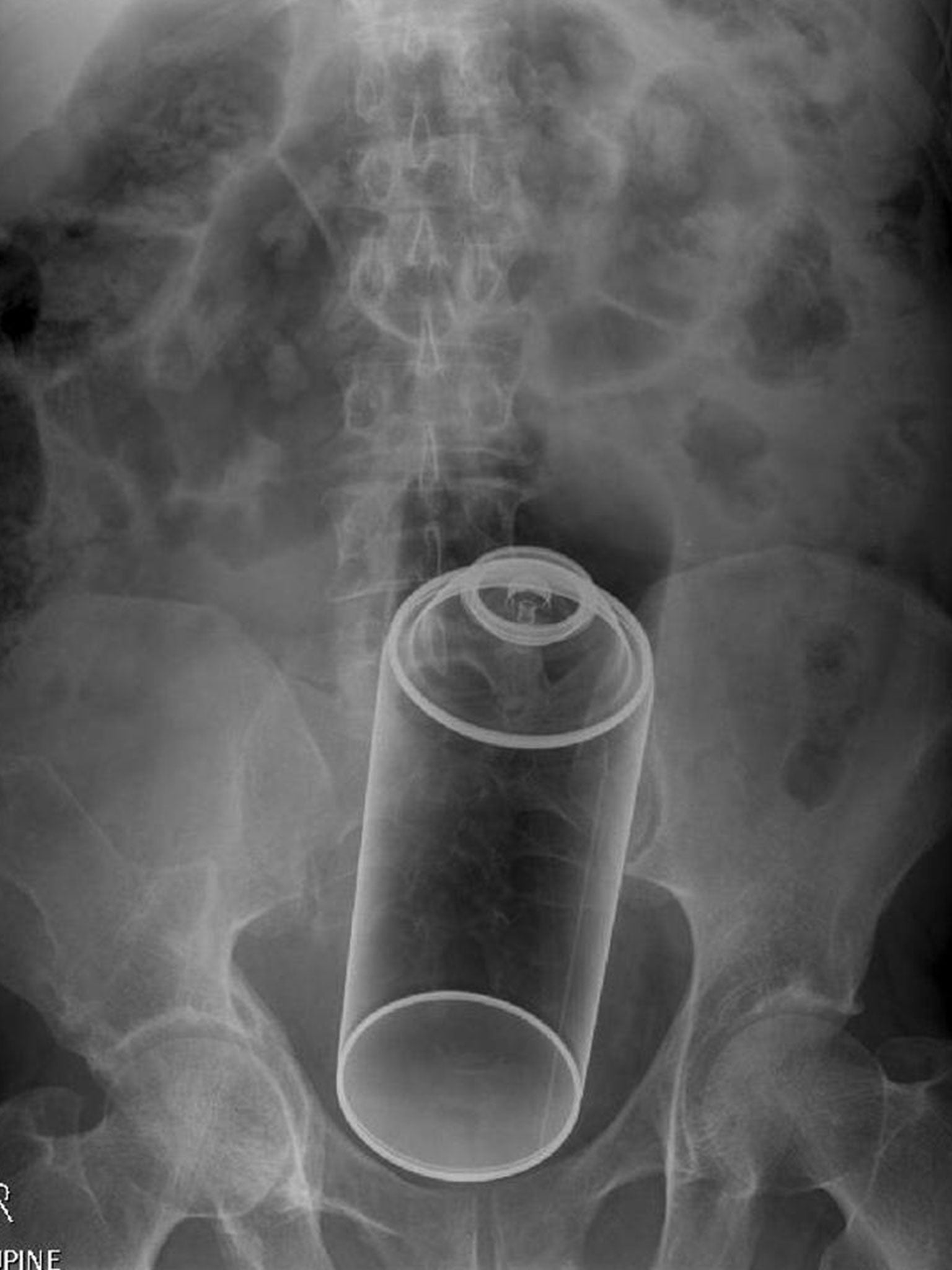Most unusual X-rays: Radiopaedia cases show deodorant cans, coffee jars and other foreign objects stuck inside patients
Radiologists have shared some of their most bizarre cases

Your support helps us to tell the story
From reproductive rights to climate change to Big Tech, The Independent is on the ground when the story is developing. Whether it's investigating the financials of Elon Musk's pro-Trump PAC or producing our latest documentary, 'The A Word', which shines a light on the American women fighting for reproductive rights, we know how important it is to parse out the facts from the messaging.
At such a critical moment in US history, we need reporters on the ground. Your donation allows us to keep sending journalists to speak to both sides of the story.
The Independent is trusted by Americans across the entire political spectrum. And unlike many other quality news outlets, we choose not to lock Americans out of our reporting and analysis with paywalls. We believe quality journalism should be available to everyone, paid for by those who can afford it.
Your support makes all the difference.A unique collaborative reference site for radiologists is attracting attention for eye-watering X-rays showing deodorant cans and other strange foreign objects stuck inside patients.
Radiopaedia.org provides a free, up-to-date reference catalogue of radiology cases for medical staff around the world. The website now has more than seven million visitors a month and over 17,600 cases available on its database.
It has been heralded for providing vital open access information that can be viewed by anyone in the world, including in developing countries where text books and medical resources can be expensive or in short supply.
However, it is also providing a source of amusement for people outside of the medical community because of X-rays where some unexpected items turned up.
Some of the more unusual objects popping up included sex-toys, an empty jar of instant coffee, a fly-spray can, knives, an axe-handle and coins.
Meanwhile, edible items included an orange, an aubergine and an egg.
The site, which was founded by Australian neuroradiologist Dr Frank Gaillard in 2005, explains that foreign bodies are a common occurrence in emergency rooms.
It says children under the age of four are more at risk of ending up with objects trapped in their airways, because "young children will put anything and everything into their mouth, and will often inadvertently swallow".
Cases of rectal foreign bodies are also a common occurrence, with incidences highest in Eastern Europe and lowest in Asia. Doctors said the vast majority of these objects are the result of "sexual misadventure".

“Patients usually know that there is something in their rectum although are often at a loss as to how the object got there," the site explains.
“Removal of such objects can be challenging depending on the shape, material and orientation within the rectum. If possible they should be removed via the anus, although in some cases a laparotomy may be required.”
Explaining his motivation for setting up the website to The Independent, Dr Frank Gaillard said that while often amusing, the cases are an excellent tool for learning.
"We believe that by sharing our collective knowledge, without imposing restrictions based on ones personal, institutional or geographical wealth, we can do a great deal of good," he said.
"Over the past 10 years, we have made great progress, with our site now visited by around two million individuals every month, from every country on earth.
"Many of the conditions we discuss are common but we also have many examples of very rare conditions; the sort of condition a radiologist may only ever see one example during their career.
"By providing a platform where we can share such cases with our colleagues, we help each other make the right diagnosis, and in turn help our clinicians treat these patients better."
Join our commenting forum
Join thought-provoking conversations, follow other Independent readers and see their replies
Comments